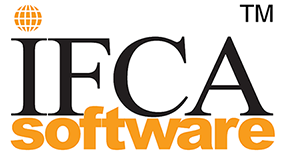 HOW can this be normal?
HOW can this be normal? Twenty-nine countries with roughly 60% of the world’s GDP have monetary policy rates of less than 1% per annum. The world is awash with debt, with sovereign, corporate and household debt of over US$230 trillion or roughly three times world GDP.
To finance their large debt and deal with deflation, both the European Central Bank (ECB) and Bank of Japan are already experimenting with negative interest rate policies (NIRP). If these do not work, look out for helicopter money, which means central bank funding of even larger fiscal deficits.
Either way, at near zero interest rates, the business model of banks, insurers and fund managers are broken. Deutschebank’s CEO has recently warned that European bank profits will struggle more as negative interest rates play into deposit rates. No wonder bank shares are trading below book value.
The problem with the current economic analysis is that no one can ascertain whether exceptionally low interest is a symptom or a cause of deep chronic malaise. Exceptionally high debt burden can only be financed by exceptionally low interest rates. The Fed now feels confident enough to raise interest rates, which means that the US asset bubbles will begin to deflate, spelling trouble to those who borrow too much in US dollars, which would include a number of emerging markets.
As Nomura chief economist Richard Koo asserts, the world has followed Japan into a balance sheet recession, with the corporate sector refusing to invest and consumer/savers too worried about outcomes to spend. The solution to a balance sheet (imbalanced) story is to re-write the balance sheet, which most democratic government cannot do without a financial crisis.
Like Japan, China’s dilemma is an internal debt issue of left hand owing the right hand, since both countries are net lenders to the world. This means that foreigners cannot trigger a crisis by withdrawing funds. The Chinese national balance sheet is also almost unique because the financial system is largely state-owned lending mostly (about two thirds) to state-owned enterprises or local governments. The Chinese household sector is also lowly geared, with most debt in residential mortgages and even these were bought (until recently) with relatively high equity cushions.
Unlike the US federal government which had a net liability of US$11 trillion or 67% of GDP at the end of 2013, the Chinese central government had net assets of US$4 trillion or 42% of GDP. Chinese local governments had net assets of a further US$11 trillion or 123% of GDP, compared to US local government net assets of 45% of GDP. Local governments hold more assets than central or federal government because most state land and buildings belong to provincial or local authorities.
Thus, unlike the US where households own 95% of net assets in the country, Chinese households own roughly half of national net assets, with the corporate sector (at least half of which is state-owned) owning roughly 30% and the state the balance. In total, the Chinese state owns roughly one-third of the net assets within the country, compared to net 4% for the US federal and state governments.
Sceptics would argue that Chinese statistics are overstated, but even if the Chinese state net assets are halved in value (because land valuation is complicated), there would be at least US$7.5 trillion of state net assets (net of liabilities) or 82% of GDP to deal with any contingencies.
Furthermore, unlike the Fed, ECB or Bank of Japan, the People’s Bank of China derives its monetary power mostly from very high levels of statutory reserves on the banking system, which is equivalent to forced savings to finance its foreign exchange reserves of US$3.2 trillion. Thus, the central bank has more room than other central banks to deal with domestic liquidity issues.
What can be done with this high level of state net assets, which is in essence public wealth? My crude estimate is that if the rate of return on such assets can be improved by 1% under professional management, GDP could be increased by at least 1.5 percentage points (1% on 165% of GDP of net state assets).
How can this re-writing of the balance sheet be achieved? There are two possibilities. One is to allow local governments to use their net assets to deleverage their own local government debt and their own state-owned enterprise debt. This could be achieved through professionally managed provincial level asset management/debt restructuring companies.
The second method is inject some of the state net assets into the national and provincial social security funds as a form of returning state assets to the public. People tend to forget that other than the painful restructuring of state-owned enterprises in the late 1990s, which led to the creation of China’s global supply chain, the single largest measure to create Chinese household wealth was the selling of residential property at below market prices to civil servants.
The size of the wealth transfer was never officially calculated, but it paved the way for boosting of domestic consumption by giving many households the beginnings of household security.
The injection of state assets into national and social security funds was not achieved in the 1990s, because the state of provincial social security fund accounting was not ready. But if China wants to boost domestic consumption and improve healthcare and social security, now is the time to use state assets to inject into such funds.
At the end of 2014, Chinese social security fund assets amounted to 4 trillion yuan, compared with central government net assets of 27 trillion yuan (Chinese Academy of Social Science data, 2015). Hence, the injection of state assets (including injection by provincial and local government) into social security funds as a form of stimulus to domestic consumption and more professional management of public wealth is clearly an affordable policy option.
In sum, at the individual borrower level, there is no doubt an ever increasing leverage ratio in China is not sustainable. But the big picture situation is manageable. If the policy objective is to improve overall productivity (and GDP growth) by improving the output of public assets, the timing is now.
 By Tan Sri Andrew Sheng who is Distinguished Fellow, Asia Global Institute, University of Hong Kong.
By Tan Sri Andrew Sheng who is Distinguished Fellow, Asia Global Institute, University of Hong Kong. Related posts:
Mar 5, 2016 ... Modern finance and money being managed like a Ponzi scheme! Economic
Collapse soon? Ponzi schemes and modern finance. Andrew...
Mar 19, 2016 ... When bull elephants like Trump trumpet their charge, beware of global
consequences. By Andrew Sheng Tan Sri Andrew Sheng writes on...
Mar 29, 2016 ... While the Federal Reserve doesn't break out hedge-fund ownership, a group
seen as a proxy increased its holdings to a record $1.27 trillion in...
Apr 16, 2016 ... That belongs to the realm of politics and education, which is another story.
Andrew Sheng writes on global issues from an Asian perspective.





















